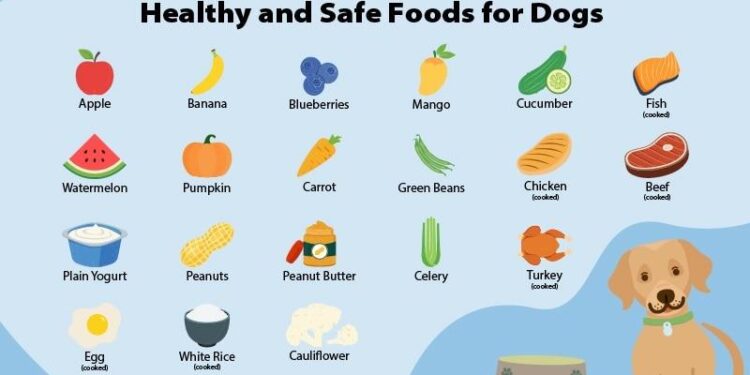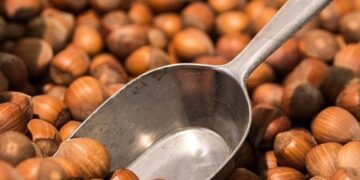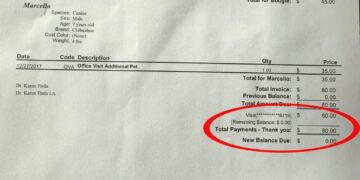Table of Contents
Part I: The Struggle: Lost in the Pet Food Aisle
Introduction: Leo’s Decline and My Desperation
It started subtly, as these things often do.
Leo, my once-vibrant Australian Shepherd, began to fade.
The boundless energy that used to propel him across the dog park was replaced by a quiet lethargy.
His walks became shorter, his interest in his favorite toys waned.
His coat, once a glossy tapestry of black, white, and copper, grew dull and peppered with flakes.
Then came the licking—a constant, maddening gnawing at his paws that left them raw and stained.
His digestion, never perfect, became a game of roulette; some days were fine, others brought bouts of loose, foul-smelling stool.1
The cycle of vet visits was a frustrating loop of ruling things O.T. Bloodwork came back normal.
Parasites were a non-issue.
No major diseases were lurking in the shadows.
We were left with a shrug and the vague diagnosis of “sensitivities.” I felt a gnawing guilt, a sense that I was failing my best friend.
My kitchen cabinet became a graveyard of expensive, half-used bags of kibble, each one representing a failed promise of wellness.
I had followed all the conventional wisdom, yet Leo was getting worse, and I was lost in a sea of marketing claims, ingredient lists, and my own mounting desperation.3
The Conventional Wisdom Trap: Drowning in Claims
My first attempts to solve Leo’s problems were guided by the bright, reassuring packaging in the pet food aisle.
I dutifully followed the advice plastered on every bag.
When he started itching, I switched from a chicken-based formula to one with lamb, operating under the common but mistaken belief that lamb is inherently hypoallergenic.4
The reality is that allergies are typically a response to a protein a dog has been exposed to before; lamb was only considered “hypoallergenic” in the past because it was a novel protein for most dogs.
Now that it’s a common ingredient, it’s just as likely to cause a reaction as any other meat.4
I bought foods labeled “premium,” “gourmet,” and “veterinarian-formulated,” believing these terms were a guarantee of quality.
I later learned these are largely unregulated marketing buzzwords with no standardized meaning.5
My focus was entirely on the ingredient list, but I was reading it with an untrained eye.
I didn’t yet understand the critical concept of “bioavailability”—the measure of how well a nutrient can be absorbed and used by the body.6
An ingredient list can be misleading if the nutrients within those ingredients pass through the dog’s system as waste.
I was taught to avoid “byproducts,” and while it’s true that vague terms like “meat byproducts” can be a red flag, the term itself isn’t inherently negative.
High-quality, named byproducts like liver and other organ meats are actually nutrient-dense and a natural part of a canid’s diet.7
The real danger lay in nonspecific ingredients like “animal fat” or “meat and bone meal,” which can be sourced from so-called “4-D” animals—those that were dead, diseased, disabled, or dying upon arrival at the slaughterhouse.5
My well-intentioned efforts were failing because I was playing a game where the rules were written by marketers, not nutritionists.
I was treating symptoms with new products, never addressing the root cause of Leo’s decline.
Chasing Trends: The Grain-Free Misstep and the DCM Scare
Just as my frustration peaked, I thought I’d found the answer: grain-free dog food.
The marketing was compelling, painting a picture of an “ancestral diet” free from “unnatural fillers.” It felt like the silver bullet I had been searching for.
I switched Leo to a popular, expensive grain-free kibble, filled with hope that this was the key to his recovery.
His symptoms, however, did not improve.
The itching and digestive upset persisted.
Worse, I soon discovered I had unwittingly stumbled into one of the most significant and frightening controversies in modern canine nutrition.
My first mistake was assuming that grain-free meant low-carbohydrate.
It does not.
To maintain the structure of the kibble and provide a source of carbohydrates, manufacturers simply replaced grains like corn and rice with other starchy ingredients, most commonly legumes like peas, lentils, and chickpeas, or starchy vegetables like sweet potatoes.7
In many cases, the total carbohydrate content remained the same or even increased.
My second, more alarming discovery was the U.S. Food and Drug Administration’s (FDA) investigation into a potential link between these diets and a serious, often fatal heart condition called diet-associated dilated cardiomyopathy (DCM).11
DCM causes the heart muscle to weaken and enlarge, leading to congestive heart failure.
While the investigation is ongoing and the exact mechanism is not fully understood, a strong correlation emerged between the rise in DCM cases—particularly in breeds not genetically predisposed to it—and the consumption of diets where legumes were listed as primary ingredients.7
The leading hypothesis suggests that the high concentration of legumes in these formulas may interfere with the absorption, synthesis, or utilization of crucial amino acids, most notably taurine, which is vital for heart health.11
The feeling of betrayal was profound.
In my attempt to avoid one perceived evil—grains, which are a perfectly healthy source of nutrients for most dogs—I may have exposed Leo to a far greater, hidden danger.7
This experience revealed a disturbing pattern in the pet food industry.
A problem, real or perceived (such as the use of low-quality grain fillers), is identified.
The industry then aggressively markets a “solution” (grain-free foods) that, in turn, creates a new, potentially more dangerous problem (the risk of DCM).
This forces consumers into a reactive cycle, constantly chasing the next trend while manufacturers profit from the confusion.
It became clear that marketing campaigns were often outpacing the long-term nutritional safety studies, leaving conscientious pet owners like me to navigate the fallout.
I knew I had to get off this hamster wheel and find a fundamentally different way to think about feeding my dog.
Part II: The Epiphany: Thinking Beyond the Kibble
A Paradigm Shift: From Ingredients to Systems
Hitting rock bottom with Leo’s health was, in a strange way, a gift.
It forced me to abandon the pet food aisle and the endless cycle of trial and error.
I realized I needed to stop looking at the dog food bag and start looking at the dog.
I had been treating Leo’s diet as a simple list of “good” and “bad” ingredients, a linear equation where adding “superfoods” and subtracting “fillers” should equal health.
But a dog is not a simple equation; it is a complex biological system.
This led me to the concept of “systems thinking,” an approach used in fields from engineering to medicine to understand complex, interconnected problems.14
Applied to veterinary nutrition, it means moving beyond a surface-level analysis of ingredients and instead examining how a diet interacts with the entire canine system—metabolic, digestive, immune—to produce an outcome, whether that’s health or disease.16
The goal is to identify and address the root cause of a problem, not just to patch over the symptoms.
The question was no longer “Which brand is best?” but rather, “What nutritional
system does my dog’s body require to function optimally?” This shift in perspective was the beginning of my epiphany.
The Science of Fuel: Deconstructing Canine Metabolism
My deep dive into the scientific literature began with a fundamental question: What kind of fuel is a dog’s body designed to run on? While it’s true that thousands of years of domestication have made dogs omnivores, capable of digesting carbohydrates far better than their wolf ancestors, their core metabolic machinery remains optimized for a diet where protein and fat are the primary energy sources.6
A pivotal 2013 study by Hewson-Hughes et al.
confirmed this: when given the choice to self-select their diet from various macronutrient sources, dogs consistently chose a formula high in fat and protein, consuming very few carbohydrates.17
This pointed me toward high-protein, low-carbohydrate (HPLC) diets.
Here, I found the scientific rationale that had been missing from the marketing hype.
A 2025 study published in the Journal of Animal Science provided the “aha!” moment, detailing the profound metabolic shift that occurs when healthy dogs are fed an HPLC diet compared to a moderate-protein, moderate-carbohydrate one.18
The key findings were:
- Improved Glycemic Control: The HPLC diet resulted in lower post-meal blood glucose concentrations. High-carbohydrate meals can cause spikes and subsequent crashes in blood sugar, leading to the kind of lethargy I was seeing in Leo. An HPLC diet provides a more stable, sustained energy source.10
- Elevated Glucagon: After a meal, dogs on the HPLC diet showed a greater and more prolonged release of the hormone glucagon. Glucagon plays a role in regulating blood sugar and has been linked to increased post-meal energy expenditure and satiety, which can aid in weight management.18
- Higher Amino Acid Concentrations: The diet provided a richer stream of amino acids—the building blocks of protein—into the bloodstream after a meal. These are essential for maintaining and repairing lean muscle mass, supporting immune function, and growing a healthy coat and skin, which can use up to 30% of a dog’s daily protein intake.18
This wasn’t about a mystical “ancestral” diet; it was about basic biology.
The HPLC diet appeared to provide a nutritional framework that directly addressed the root causes of Leo’s symptoms: unstable energy levels from carbohydrate metabolism and an insufficient supply of high-quality building blocks for his skin, coat, and muscles.
Confronting the Controversy: Is High Protein Dangerous?
Armed with this new understanding, I couldn’t ignore the persistent warnings I’d encountered about the dangers of high-protein diets.
To move forward with confidence, I had to confront these arguments head-on.
First was the pervasive myth that high-protein diets cause kidney failure in healthy dogs.
This is one of the most enduring misconceptions in canine nutrition.
The truth is that while veterinarians restrict protein for dogs who already have kidney disease, there is no scientific evidence to suggest that a high-protein diet causes the disease in a healthy animal.4
The confusion arises because failing kidneys struggle to filter urea, a waste product of protein metabolism.
Reducing dietary protein can lower the amount of waste the kidneys have to process, making the sick dog feel better.
However, for a healthy dog, this is not a concern.
The focus, researchers agree, should be on feeding a moderate level of high-quality, highly bioavailable protein that produces fewer waste products in the first place.4
The second concern was more complex and scientifically grounded: the potential link between excessively high protein intake and cancer.
Research in humans and rats has shown a correlation between high levels of ammonia produced from protein fermentation in the gut and higher rates of colon cancer.20
The mechanism is straightforward: when a dog consumes more protein than its body can use for tissue repair and energy, the excess amino acids travel to the large intestine.
There, gut bacteria ferment them, producing nitrogenous compounds like ammonia, indoles, and phenols.
Several of these byproducts are considered carcinogenic.20
This same process is responsible for the infamous “lawn burn” spots; the kidneys work overtime to excrete the excess nitrogen in the urine, creating highly concentrated patches that scorch the grass.20
This is where the pieces of the puzzle clicked into place.
The benefits of a high-protein diet and the risks were not mutually exclusive; they were two sides of the same coin, separated by a crucial distinction: optimal versus maximal.
The danger lies in feeding excessive amounts of protein—more than the dog’s body can reasonably utilize.
For most adult dogs with a normal lifestyle, a protein level above 30% is likely too high and becomes a metabolic burden.20
The benefit, however, comes from feeding an
optimal amount of high-quality protein that displaces low-value carbohydrates.
This led to the final, crucial part of my epiphany, which dismantles the central marketing myth of the “ancestral diet” movement: dogs are not wolves.20
While they share a common ancestor, 12,000 years of domestication have forged significant genetic differences.
Notably, dogs have evolved multiple copies of genes that allow them to efficiently digest starches and fats, an adaptation that was critical to their survival alongside agrarian human societies.20
The goal, therefore, is not to crudely replicate a wild wolf’s diet.
It is to formulate a diet that respects their carnivorous lineage while acknowledging their unique, domesticated physiology.
The solution wasn’t just “high protein”; it was the
right amount of high-quality protein, balanced with healthy fats and a low level of carbohydrates.
Part III: The Solution: A Curated Path to Wellness
My Five-Point Checklist for Choosing a Superior HPLC Food
My epiphany transformed my approach from one of passive consumerism to active investigation.
I developed a five-point checklist—a systematic framework for cutting through marketing noise and evaluating any dog food based on sound nutritional principles.
This is the system I used to finally find the right food for Leo.
1.
Prioritize Named Animal Proteins (and Meals): The first two or three ingredients on the label should be high-quality, specifically named animal sources, such as “deboned chicken,” “lamb meal,” or “salmon”.5
Vague terms like “meat byproducts” or “poultry meal” should be avoided.22
Don’t be afraid of named meat meals (e.g., “chicken meal”); these are simply a concentrated form of meat with the water removed, making them a dense source of protein.23
2.
Calculate the Estimated Carbohydrate Content: Pet food manufacturers are not required by the Association of American Feed Control Officials (AAFCO) to list the carbohydrate percentage on the Guaranteed Analysis panel, which is a significant disadvantage for consumers seeking low-carb options.17
However, you can estimate it yourself.
Find the percentages for Crude Protein, Crude Fat, Crude Fiber, and Moisture on the label.
Add them together, along with an estimate for ash (typically 7-8% for kibble).
Subtract this total from 100.
The remaining number is the approximate percentage of carbohydrates in the food.
This simple calculation is an incredibly empowering tool for seeing what the label doesn’t explicitly tell you.
3.
Evaluate Fat Sources and Omega Balance: Fat is a crucial energy source for dogs and is essential for absorbing fat-soluble vitamins.19
Look for high-quality, named animal fats like “chicken fat” rather than generic “animal fat”.24
Equally important is the balance of omega fatty acids.
Look for ingredients rich in Omega-3s, such as fish oil (salmon, pollock, herring oil) or flaxseed.
Omega-3s have anti-inflammatory properties that can help with skin and joint health, while Omega-6s are important for skin and coat, but can be pro-inflammatory in excess.3
4.
Scrutinize Micronutrients and Additives: The details matter.
A superior food will include beneficial additives that support overall health.
Look for:
- Probiotics: Live beneficial bacteria (e.g., Lactobacillus acidophilus) that support gut health and digestion.12
- Antioxidants: Often supplied by fruits and vegetables like blueberries, cranberries, and carrots, which help combat cellular damage.3
- Natural Preservatives: Look for tocopherols (Vitamin E), ascorbic acid (Vitamin C), or rosemary extract. Avoid controversial chemical preservatives like BHA, BHT, and ethoxyquin, which have been linked to health problems.5
- Chelated Minerals: These are minerals that have been bonded to an amino acid, making them much easier for the body to absorb. Their presence is a hallmark of a higher-quality, more bioavailable formulation.13
5.
Investigate Brand Reputation and Sourcing: A great ingredient list is meaningless if the company has poor quality control.
Before buying, do a quick search for the brand’s recall history.
Prefer companies that are transparent about where their ingredients are sourced and who formulate their diets with the input of board-certified veterinary nutritionists.5
A reputable company should be able to answer your questions about their manufacturing processes and safety standards.28
The Best in Class: An In-Depth Analysis of High-Protein, Low-Carb Dog Foods
Applying this five-point checklist, I conducted an exhaustive analysis of the leading HPLC brands on the market.
The following table provides a comparative overview to help you navigate your options.
It distills complex data into a clear, actionable format, highlighting the crucial estimated carbohydrate content that is so often hidden from consumers.
| Brand & Formula | Primary Protein Sources | Crude Protein (Min %) | Crude Fat (Min %) | Estimated Carb % (Dry Matter Basis)¹ | Key Features & Considerations |
| Orijen Original | Chicken, Turkey, Salmon, Herring, Chicken Liver | 38% | 18% | ~28% | Pro: Extremely high meat inclusion (85%), WholePrey ratios (organs/bone). Con: Very high protein may not suit all dogs; legume-heavy; user reports of formula changes and quality control issues.13 |
| Acana Free-Run Poultry | Chicken, Turkey, Chicken Meal | 29% | 17% | ~34% | Pro: High-quality named proteins; from the makers of Orijen. Con: Lower protein and higher carbs than Orijen; heavy use of lentils/peas raises DCM concerns for some owners.12 |
| Nulo Freestyle Adult Trim | Deboned Cod, Turkey Meal, Salmon Meal | 30% | 7-9% | ~37% | Pro: Excellent for weight management (low fat, L-Carnitine); patented probiotics. Con: Higher carb content; not suitable for highly active dogs needing more fat for energy.33 |
| Taste of the Wild High Prairie | Water Buffalo, Lamb Meal, Chicken Meal | 32% | 18% | ~35% | Pro: Novel proteins (bison/venison) good for allergies; includes species-specific probiotics. Con: Mixed user reviews on recent quality control and ingredient consistency.26 |
| Wellness CORE Original | Deboned Turkey, Turkey Meal, Chicken Meal | 34% | 16% | ~32% | Pro: High meat content; includes antioxidants, probiotics, and added taurine. Con: Still contains significant peas/potatoes; some reports of causing digestive upset in sensitive dogs.23 |
| Canidae PURE Limited Ingredient | Salmon, Salmon Meal | 25% | 18% | ~37% | Pro: Simple, limited ingredient list (8 key ingredients) is excellent for dogs with allergies. Con: Lower protein and higher carbs than others; reports of mold and quality control issues in some batches.41 |
¹ Carbohydrate content is estimated on a dry matter basis, assuming an average ash content of 8%.
This is not a guaranteed value and is calculated for comparison purposes.
Brand Spotlights: A Deeper Dive
A comparative table is a starting point, but a deeper look into a brand’s philosophy and real-world performance is essential.
My research revealed a consistent and troubling pattern: even among the most highly-rated, “premium” brands, there is a significant stream of user reports detailing inconsistent batches, mold, contamination, and unannounced formula changes leading to sudden illness.13
This suggests that the manufacturing and supply chain logistics of the pet food industry can be a major point of failure.
It underscores that brand loyalty alone is not enough; a consumer must remain perpetually vigilant, because the quality of the product bought last month is not guaranteed in the bag bought today.
Spotlight 1: Orijen – The Aspirational Ideal?
Orijen is often held up as the gold standard in this category.
Its “Biologically Appropriate” philosophy is compelling, and its ingredient lists are undeniably impressive.
The Orijen Original formula, for example, boasts that 85% of its content is from animal ingredients, with the first five being fresh or raw chicken, turkey, salmon, whole herring, and chicken liver.13
It incorporates a “WholePrey” model, including nutrient-rich organs and cartilage, which closely mimics a natural diet.30
On paper, it is a superior product.
However, the real-world feedback tells a more complicated story.
A significant number of long-time, loyal customers report a perceived decline in quality, often linked to the company’s acquisition and a shift in manufacturing locations.13
Common complaints include new bags having a different smell or appearance, leading to sudden and severe digestive upset (vomiting, diarrhea) in dogs that had thrived on the food for years.13
While many dogs still do exceptionally well on Orijen, the volume of these reports suggests that its execution may not always live up to its premium promise and price tag.
Spotlight 2: Nulo Freestyle – The Functional Choice
Nulo positions itself as a more functional, solution-oriented brand.
Its marketing focuses less on a wild, ancestral ideal and more on modern nutritional science.
A key differentiator is its emphasis on functional ingredients.
For instance, the Adult Trim formula includes L-Carnitine to help support fat metabolism, making it a thoughtful choice for weight management.33
Nearly all their formulas include a patented, highly stable probiotic, GanedenBC30, to support digestive and immune health.25
Nulo also stands out for its commitment to high animal-based protein (typically over 74-80%) and its frequent avoidance of the most common allergens.33
Many of their recipes, including their limited ingredient lines, are made without chicken or eggs, which is a significant benefit for dogs with sensitivities.33
This focus on targeted nutrition makes Nulo a strong contender for owners looking to address specific health needs beyond just providing a basic high-protein diet.
Spotlight 3: Taste of the Wild – The Accessible Innovator
Taste of the Wild was instrumental in bringing the concept of novel proteins and grain-free diets to the mainstream market.
Formulas like its High Prairie recipe, featuring bison and venison, offered an accessible entry point for owners looking for alternatives to chicken and beef.47
The brand also includes species-specific probiotics and antioxidants from fruits and vegetables, checking many of the boxes on the quality checklist.49
However, like Orijen, Taste of the Wild is the subject of numerous user complaints regarding inconsistent quality.
The theme of the “bad batch” is particularly prevalent in owner reviews, with many describing a similar pattern: a dog does well on the food for months or years, then a new bag causes immediate and severe gastrointestinal distress.36
While the company has a large and loyal following, these recurring quality control concerns serve as a powerful case study.
They remind us that even with a trusted, long-standing brand, vigilance is paramount.
Conclusion: Leo’s Revival and Your Path Forward
After weeks of research, armed with my new systems-based approach and five-point checklist, I made my choice.
For Leo, I selected a formula from Nulo’s limited ingredient line.
It offered a high-quality, single-source animal protein, was free from the chicken and peas that I suspected were part of his problem, and included the functional probiotics his sensitive gut needed.
I transitioned him slowly, mixing a small amount of the new food with his old over the course of ten days, as recommended to avoid digestive upset.10
The change was not immediate, but it was profound.
Within a month, the frantic paw-licking stopped.
His stool became consistently firm.
Over the next two months, his coat grew back thick and glossy, the flakes vanished, and the bright, energetic spark returned to his eyes.
He was the dog I knew he could be.
Leo’s transformation was the ultimate proof that I had finally found the root of the problem.
This journey taught me that there is no single “best” dog food.
The best food is not a static product but a dynamic match between a well-formulated, high-quality diet and the unique needs of your individual dog—factoring in their age, breed, activity level, and any sensitivities they may have.11
This guide is not meant to replace the advice of a professional.
Instead, it is a tool to empower you.
Take this framework, use the checklist, and have a more informed, productive conversation with your veterinarian.2
You are your dog’s greatest advocate.
By moving beyond the bag and thinking critically about the nutritional system your dog needs, you can cut through the confusion and find a clear path to their health and vitality.
Works cited
- Pet owners, when did you realize your pet’s food was actually the problem? : r/Pets – Reddit, accessed August 16, 2025, https://www.reddit.com/r/Pets/comments/1m35dsu/pet_owners_when_did_you_realize_your_pets_food/
- What Kind Of Food Should You Feed Your Dog? A Nutritionist’s Advice – Texas A&M College of Veterinary Medicine, accessed August 16, 2025, https://vetmed.tamu.edu/news/pet-talk/what-kind-of-food-should-you-feed-your-dog/
- 5 Biggest Problems with Commercial Dog Food + What to Do About It! – Wellbeing for Dogs, accessed August 16, 2025, https://wellbeingfordogs.com.au/blogs/wellbeing/5-of-the-biggest-problems-with-dog-food-and-what-to-do-about-it
- The Truth Behind 8 Dog Food Myths – American Kennel Club, accessed August 16, 2025, https://www.akc.org/expert-advice/nutrition/dog-food-myths/
- A Thorough Guide to Choosing the Best Dog Food for a Long …, accessed August 16, 2025, https://www.petful.com/food/how-to-choose-the-best-dog-food/
- High Protein Dog Foods: What You Need to Know – Hill’s Pet Nutrition, accessed August 16, 2025, https://www.hillspet.com/dog-care/nutrition-feeding/too-much-protein-in-dog-food
- Fact Versus Fiction: Unveiling Pet Nutrition Myths – Parker Center Animal Clinic, accessed August 16, 2025, https://parker-vet.com/fact-versus-fiction-unveiling-pet-nutrition-myths/
- Dog Food Myths: What Should I Feed My Dog? – Animal Care Hospital of Morris, accessed August 16, 2025, https://www.achmorris.com/post/dog-food-myths-what-should-i-feed-my-dog-.html
- The Big Problem With Commercial Dog Foods – ChefPaw, accessed August 16, 2025, https://www.chefpaw.com/blogs/news/the-big-problem-with-commercial-dog-foods
- Unleashing the Truth: The Benefits and Science Behind High-Protein, Low-Carb, and Ketogenic Dog Food, accessed August 16, 2025, https://www.whole-dog-journal.com/food/low-carb-ketogenic-dog-food/
- 11 Best Dog Foods | The Strategist – New York Magazine, accessed August 16, 2025, https://nymag.com/strategist/article/best-dog-food.html
- ACANA Dog Food Review, accessed August 16, 2025, https://www.petfoodreviews.com.au/acana-dog-food-review/
- Orijen Dog Food Review (Dry), accessed August 16, 2025, https://www.dogfoodadvisor.com/dog-food-reviews/orijen-dry-usa/
- Food systems veterinary medicine – PubMed, accessed August 16, 2025, https://pubmed.ncbi.nlm.nih.gov/22124228/
- WageningenX: Sustainable Food Security: The value of systems thinking – edX, accessed August 16, 2025, https://www.edx.org/learn/sustainability/wageningen-university-research-sustainable-food-security-the-value-of-systems-thinking
- Assessing the Role of Systems Thinking for Stocker Cattle …, accessed August 16, 2025, https://pmc.ncbi.nlm.nih.gov/articles/PMC9961819/
- Why aren’t we talking More about low-carb dog food? – The Bones & Co., accessed August 16, 2025, https://www.thebonesandco.com/blog/why-do-we-talk-about-low-carb-dog-food
- Dogs fed a high protein, low carbohydrate diet have elevated …, accessed August 16, 2025, https://pmc.ncbi.nlm.nih.gov/articles/PMC11884650/
- Dog Nutrition: Choosing The Right Dog Food – Lombard Veterinary Hospital, accessed August 16, 2025, https://www.lombardvet.com/services/dogs/dog-nutrition
- Can High Protein Pet Food Diets Cause Cancer in Dogs and Cats?, accessed August 16, 2025, https://www.lucypetproducts.com/blog/can-high-protein-pet-food-diets-cause-cancer-in-dogs-and-cats/
- Debunking the Dog Protein Myth – Burns Pet Nutrition, accessed August 16, 2025, https://burnspet.co.uk/2020/04/20/debunking-the-dog-protein-myth/
- What are the key things to look for while purchasing dog food? – Quora, accessed August 16, 2025, https://www.quora.com/What-are-the-key-things-to-look-for-while-purchasing-dog-food
- Wellness CORE Dog Food Review, accessed August 16, 2025, https://www.petfoodreviews.com.au/wellness-core-dog-food-review/
- How to Choose Dog Food: What is the best food for dogs? – Argyle Veterinary Hospital, accessed August 16, 2025, https://www.argylevet.com/site/blog/2023/12/15/choose-dog-food
- Nulo FreeStyle Freeze Dried Dog Food | Only Natural Pet, accessed August 16, 2025, https://www.onlynaturalpet.com/products/nulo-freestyle-freeze-dried-dog-food
- TASTE OF THE WILD High Prairie Grain-Free Dry Dog Food, 14-lb bag – Chewy.com, accessed August 16, 2025, https://www.chewy.com/taste-wild-high-prairie-grain-free/dp/30075
- Blue Buffalo Wilderness Rocky Mountain Recipe Dog Food Review (Dry), accessed August 16, 2025, https://www.dogfoodadvisor.com/dog-food-reviews/blue-buffalo-wilderness-rocky-mountain-dry/
- About Pet Food Safety – CDC, accessed August 16, 2025, https://www.cdc.gov/healthy-pets/about/pet-food-safety.html
- Product Reviews for ORIJEN Original Grain-Free High-Protein Dry Dog Food – Chewy.com, accessed August 16, 2025, https://www.chewy.com/orijen-original-grain-free-dry-dog/product-reviews/29726
- Original Dry Dog Food – ORIJEN, accessed August 16, 2025, https://www.orijenpetfoods.com/en-US/dogs/dog-food/original/ds-ori-original-dog.html
- Acana Free-Run Poultry Recipe Dry Dog Food – Pet Food Express, accessed August 16, 2025, https://www.petfood.express/products/acana-free-run-poultry-recipe-dry-dog-food.html
- ACANA Free Run Poultry Formula Grain Free Dry Dog Food – Petsense, accessed August 16, 2025, https://www.petsense.com/products/acana-free-run-poultry-formula-grain-free-dry-dog-food
- Nulo Dog Food Review: Recalls, Pros & Cons – Dogster, accessed August 16, 2025, https://www.dogster.com/dog-nutrition/nulo-dog-food-review
- Nulo – Freestyle Adult Trim Cod & Lentils Recipe Dry Dog Food – Altoona, IA – Des Moines, IA – Bone a Patreat, accessed August 16, 2025, https://www.boneapatreat.com/products/weight-management-cod
- Nulo Freestyle Adult Trim Cod & Lentils Dry Dog Food – Pet Food Express, accessed August 16, 2025, https://www.petfood.express/products/nulo-freestyle-adult-trim-cod-lentils-dry-dog-food.html
- Taste of the Wild Reviews: Written By Customers – Consumer Affairs, accessed August 16, 2025, https://www.consumeraffairs.com/pets/taste-of-the-wild.html
- Taste of the Wild Dog Food Review, accessed August 16, 2025, https://www.dogfoodadvisor.com/dog-food-reviews/taste-of-the-wild/
- Taste of the Wild High Prairie Dry Dog Food – Chaar, accessed August 16, 2025, https://www.chaar.us/pet/dog/dog-food/dry-food/taste-of-the-wild-high-prairie-dry-dog-food/
- Wellness® CORE® Adult Dry Dog Food – Natural, Grain Free, Original Formula – PetSmart, accessed August 16, 2025, https://www.petsmart.com/dog/food/dry-food/wellness-core-adult-dry-dog-food—natural-grain-free-original-formula-30372.html
- Wellness CORE Grain-Free Dog Food Review (Dry), accessed August 16, 2025, https://www.dogfoodadvisor.com/dog-food-reviews/wellness-core-grain-free-dry/
- Canidae Pet Foods Reviews from Real Customers – Consumer Affairs, accessed August 16, 2025, https://www.consumeraffairs.com/pets/canidae.html
- Canidae PURE Dog Food Review, accessed August 16, 2025, https://www.petfoodreviews.com.au/canidae-pure-dog-food-review/
- Canidae® Pure™ Adult Dry Dog Food – Limited Ingredient Diet, With-Grain, Salmon & Barley – PetSmart, accessed August 16, 2025, https://www.petsmart.com/dog/food/dry-food/canidae-pureandtrade-adult-dry-dog-food—limited-ingredient-diet-with-grain-salmon-and-barley-57816.html
- Do you recommend orijen pet food? : r/germanshepherds – Reddit, accessed August 16, 2025, https://www.reddit.com/r/germanshepherds/comments/10p3skw/do_you_recommend_orijen_pet_food/
- FreeStyle High-Protein Kibble For Small Breeds Salmon & Red Lentils Recipe | Nulo, accessed August 16, 2025, https://nulo.com/products/freestyle-high-protein-kibble-for-small-breeds-salmon-red-lentils-recipe
- Nulo Dog Food Review 2025 – Wag!, accessed August 16, 2025, https://wagwalking.com/product-guides/reviews/dog-food/nulo-dog-food
- Taste of the Wild Dog Food Review, accessed August 16, 2025, https://www.petfoodratings.org/taste-of-the-wild-dog-food-review/
- Taste Of The Wild Dog Food High Prairie With Roasted Bison & Venison – Hollywood Feed, accessed August 16, 2025, https://www.hollywoodfeed.com/p/17062/taste-of-the-wild-dog-food-high-prairie-with-roasted-bison-venison
- Taste of the Wild Grain-Free High Prairie Canine Recipe w/ Roasted Bison & Roasted Venison Dry Dog Food – Pet Food Express, accessed August 16, 2025, https://www.petfood.express/products/taste-of-the-wild-grain-free-high-prairie-canine-recipe-w-roasted-bison-roasted-venison-dry-dog-food.html
- Choosing the Best Diet for Your Pet | VCA Animal Hospitals, accessed August 16, 2025, https://vcahospitals.com/know-your-pet/choosing-the-best-diet-for-your-pet






